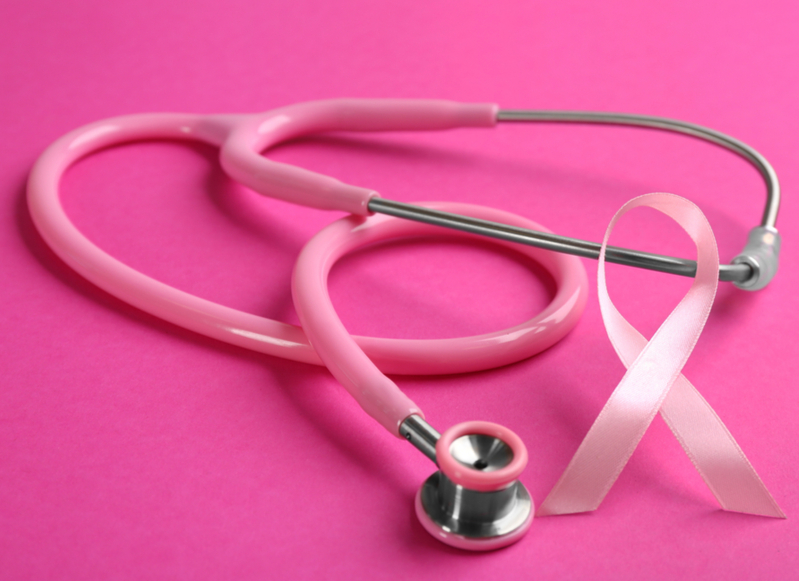The second most prevalent cancer in women is breast cancer. Every woman has to be on the lookout for any early signs and be vigilant about monitoring them. Women over the age of 40 should have a mammogram every year.
As well as frequent self-examination, they should be on the lookout for any possible signs. Women should be aware of these changes, how to spot warning signs when they appear. Timely medical intervention can help reduce the severity of the disease.
What Does a Normal Breast Look Like?
Nipples and areolas are part of a healthy set of breasts. Every woman has a different breast size. Some women may have tiny breasts, while others may have big breasts. Contrary to popular belief, the size and form of your breasts can change over time owing to changes in your hormone levels. Menopausal and pregnant women both might have swollen or drooping breasts. Breasts begin to droop as women age.
Breast Cancer – The Warning Signs and Symptoms
Women should never ignore the warning indicators of breast cancer. Although early detection of breast cancer is not always possible, women over the age of 40 should perform frequent self-examinations to be on the safe side. Here are some warning symptoms of breast cancer in women that you should be aware of:
1. There Is a Lump In The Breast
Finding a lump in the breast might be a symptom of breast cancer. Having a breast lump means you are developing a cancerous tumor and should seek medical care right away. Cysts can form in the breasts, which will eventually ripen into cancer if left untreated. Even under the armpit, you may find a breast bulge.
Women should do a slow self-examination using a circling motion around the breasts while standing upright with their hands on their hips. They can even lie on their backs with one hand on each breast and switch between the two. It helps in figuring out the shape of the breasts and locating any lumps that may be present.
2. Discharge from the nipples
If any liquid, blood, or pus comes out of a breast, it indicates that something is wrong with the breast. In the absence of pregnancy, a woman’s milk production may serve as an early indicator of breast cancer.
3. Retraction Of the Nipples
The nipple of a healthy woman faces outwards. If, on the other hand, a nipple pulls in, it may be cause for concern. Even males must be on the lookout for warning signals such as a pulling in of the breast. These breast cancer warning signals are also seen in males.
4. Changes In The Skin
Breast cancer symptoms can sometimes appear on the skin as a warning. The skin on your breasts and nipples may dry up and crack, become extremely painful and red when they are inflamed, and the skin surrounding the breasts might thicken in certain women. You should never ignore the signs and symptoms of breast cancer.
However, certain other diseases can cause similar breast changes. If any of these symptoms develop frequently or suddenly, you should make an appointment with your primary care physician or an oncologist without delay.
5. Changes In Breast Form Or Size
It is possible to detect breast cancer early if you notice a change in the size of the breasts. Rapid breast growth or the appearance of moles are both red flags. Women must constantly monitor their breast size for changes.
When Should You Make An Appointment With A Doctor?
Visit an oncologist as soon as you detect any of the symptoms mentioned above. If you see a doctor as quickly as possible, they can begin treating you right away. However, not every breast soreness is indicative of breast cancer and should be treated as such. A wide range of factors can cause tenderness in the breasts, such as:
- Breast soreness and discomfort are both caused by hormonal changes. The elevated hormone levels in pregnant women’s bodies during the first trimester can induce breast discomfort and soreness.
- Breast discomfort is likely after a chest injury. One of the most common causes of breast discomfort in women is an ill-fitting bra. After 20 hours of wearing one, women are likely to have soreness all over their chest. Breastfeeding might cause some discomfort for some women. See a doctor soon if you have persistent breast discomfort, redness, lumps, or other symptoms.
Knowing the warning signals is critical for catching breast cancer early. Cancer affects males just as it does women, so everyone should be on the lookout for the warning symptoms. These warning signals can also be caused by something else, such as a medication’s side effects. The oncologist will be the one to identify the specific problem and provide guidance, timely and suitable treatment.

